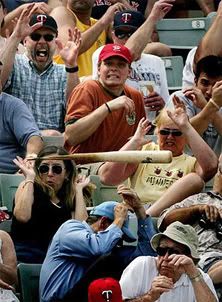First of all I want to say that I am sincerely honored to have been asked to contribute to this great blog. I hope this article will provide relevant and interesting facts for other curious coaches on this page.
I have been asked to give you some kind of European perspective about football.
The game is now played in almost every western European country (www.ifaf.info), and you can find football fans everywhere in the world.
We have the same rules, for sure, but the environment is waaaaaay different here. And when I say here, I mean France, as I am a French football coach (www.les-falcons.com).
For most of the people outside of the USA, football is like coconut: It looks good, but no one knows how to deal with it.
In other words, football is not part of our culture. Basically that means no fans in the stands, no boosters, and parents very reluctant to let their kids play "american rugby".
In France, a country of 65 million people, we have 25 000 players on about 150 teams, separated in 3 National Levels -- Division 1, Division 2, Division 3 (where I coach at the moment) and also some Regional Championships.
You also have to know that we don't operate in a scholastic environment.
Here it's an amateur team club sport. You can play from 12 years old to whenever your body let you play and there are 4 age groups (U14, U16, U19, +19 years old). Kids usually come to practice from 6pm to 8pm, after school and homework. Nothing is mandatory. Being non-scholastic also means poor facilities. In France there are some fields that have Field Turf with Y goal posts, but most of the teams share fields and locker rooms with soccer or rugby teams. As an example, our game field does not measure the U.S. standard 120 yards long, but is approximately 110 yards... with rugby posts. That means midfield is at the 45-yard-line. We don't even have goal posts on our practice field!
Another main difference is that we cannot practice more than twice per week. Keep in mind that it's an amateur game here. Players on my senior team (+19years old) could be in charge of a family or could be just students. On my 63-man roster I have a running back/baker, wide receiver/salesman, linebacker/law school student, QB/manager, DB/unemployed, DL/bouncer, OL/computer scientist... As a result of that, presence at practice and games is a constant concern.
On the other hand guys who choose to play football and show up at practice twice a week are really passionate.
First, they have to pay to play - each year more than 230USD... They also have to pay for (or rent in some cases) their equipment, about 400USD for a complete package. Want to get better? faster? stronger? It's another 400USD for a year-round gym pass...
Poor facilities, expensive sport, amateur level of play. If you are reading these lines, I bet you are pretty sorry for us right now... There is more: Coaches. We are not getting paid. My Defensive Co-ordinator is a plumber in "real life"; I am a radio journalist.
How in the world do we (European Coaches) manage to do anything good in those conditions?
Jeff Reinebold from SMU was speaking at a Coaching Clinic in Bavaria (Germany) a few weeks ago. He pumped up the gathered coaches by saying -- and I paraphrase:
"You are the best coaches; we are spoiled for choice. You don't have anything and are forced to make do."
Obviously, I don't think we are the best coaches. But the truth is you have to be quite inventive to coach a team or even a position without a lot at your disposal. You probably have not noticed but all the coaching materials (DVDs, books, articles, blogs, forums, clinics, software) are written in English. So if you don't read English, you're done.
I coach a 63-man roster this season and we are only 2 coaches... Fortunately we have players with double-digit years of experience that can run drills and/or take care of a position.
So everything we do, we have to do it with PASSION and LOVE for the game.
One of my former coaches, a Canadian guy with a 25 years experience of coaching high school kids, recently told me that his best coaching experience was when he won the '95 national championship with my team... "Best memories on and off the field" - that's what he told us.
Also, the game seems to get better each year. Players work during the off season (which was not a habit previously), and get bigger, and stronger. This season in France, one of the top teams recruited a former UCLA back-up QB (US or Canadian players/coaches are professional even if they do not make a lot of money. For more info go to www.europlayers.com). That kind of player helps to raise the general level of play across the league.
The numbers are rising too. Football is becoming more and more popular.
We are on our way.... Still a long way to go, though ;)
I told people who make fun of us because we play "American Rugby" that their sons will probably play for me soon.
2 French players have already reached NFL practice squads in recent years and I know there are a lot of Germans on NCAA teams. Not too bad when you consider that the first French league wasn't created until 1986.
Julien






































.png)





.png)
.png)
.png)
.png)
.png)